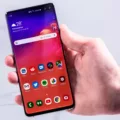Android phones have become incredibly popular in recent years, offering a wide range of features and functionalities. However, one common issue that many users face is bloatware. Bloatware refers to pre-installed apps and software that come with the phone, often taking up valuable storage space and slowing down the device. In this article, we will explore the benefits of using an Android phone and discuss some options for Android phones with the least bloatware.
Android phones are known for their versatility and customization options. With an Android phone, you have access to a vast app ecosystem, allowing you to personalize your device according to your preferences. Whether you’re looking for productivity apps, social media platforms, or entertainment options, the Google Play Store has it all.
However, one downside of using an Android phone is the presence of bloatware. Many manufacturers preload their devices with unnecessary apps that cannot be uninstalled. This not only takes up valuable storage space but also affects the overall performance of the phone. Bloatware can slow down your device, drain your battery, and even pose security risks.
If you’re looking for an Android phone with the least bloatware, there are a few options to consider. One popular choice is the Google Pixel series. Google’s own line of smartphones offers a clean and minimalistic user interface, with no unnecessary pre-installed apps. This ensures that you have more control over your device and can choose which apps to install according to your needs.
Another option to consider is the Android One program. Android One is a stock Android experience, free from bloatware and unnecessary customizations. Phones under the Android One program receive regular software updates directly from Google, ensuring that you have the latest security patches and features. Nokia is known for its Android One devices, offering a pure Android experience with minimal bloatware.
Additionally, some manufacturers offer “lite” versions of their smartphones, designed for users who prefer a more streamlined experience. These lite versions often come with fewer pre-installed apps, offering a cleaner and faster user interface. Examples include the Samsung Galaxy A series and Xiaomi’s Redmi series.
Android phones offer a wide range of features and customization options. However, bloatware can be a common issue, affecting the performance and storage space of the device. If you’re looking for an Android phone with the least bloatware, options such as the Google Pixel series, Android One devices, and lite versions from manufacturers like Samsung and Xiaomi are worth considering. It’s important to choose a device that suits your needs and preferences, ensuring a smooth and enjoyable user experience.
Which Android Phone Has No Bloatware?
When it comes to Android phones, bloatware refers to pre-installed apps and software that may not be essential or useful to the user. Some people prefer phones that have minimal or no bloatware, as it allows for a cleaner and more streamlined user experience. While it is challenging to find Android phones without any bloatware, there are a few options available in the market. Here are some Android phones known for having minimal or no bloatware:
1. ASUS ZenFone 10: The ASUS ZenFone 10 is recognized for its clean and near-stock Android experience. It comes with a minimal amount of pre-installed apps, allowing users to customize their device according to their preferences.
2. Sony Xperia 1 V: Sony Xperia 1 V is another Android phone that offers a relatively bloatware-free experience. Sony has a reputation for keeping their devices closer to stock Android, providing users with a cleaner interface.
3. Motorola Edge Plus (2023): Motorola devices are known for their near-stock Android experience. The Motorola Edge Plus (2023) is expected to continue this trend, offering users a clean and bloatware-free interface.
It is important to note that while these phones may have minimal bloatware, they may still come with some pre-installed apps that cannot be uninstalled. However, compared to other Android phones, these devices strive to provide a more streamlined experience.
Please keep in mind that the availability and extent of bloatware can vary depending on the region, carrier, and specific phone models. It is recommended to research and read reviews before making a purchase to ensure the desired level of bloatware customization.

What is the Lightest Android Operating System?
The lightest Android operating system currently available is Android Go, also known as Android (Go edition). This version of Android is specifically designed for low-end and ultra-budget smartphones, as well as some tablets. Its main goal is to provide a smooth and efficient user experience on devices with limited hardware capabilities.
Here are some key features of Android Go:
1. Stripped-down version: Android Go is a stripped-down version of the regular Android operating system. It removes unnecessary features and optimizes the system for devices with lower hardware specifications.
2. Reduced memory footprint: One of the main advantages of Android Go is its reduced memory footprint. It is optimized to run smoothly on devices with 2 GB of RAM or less. This allows for better performance and faster app loading times on low-end devices.
3. Lightweight apps: Android Go also promotes the use of lightweight versions of popular apps. These versions are designed to consume fewer system resources and data, making them ideal for devices with limited storage and slower internet connections.
4. Data management: Android Go includes built-in data management tools to help users better manage their data usage. It provides options to limit background data, track data usage, and even optimize data usage for specific apps.
5. Play Store optimization: The Google Play Store for Android Go devices is also optimized to showcase lightweight apps that are compatible with low-end hardware. This ensures that users can easily find and download apps that are optimized for their devices.
Android Go is the lightest Android operating system available, designed for low-end and ultra-budget devices. Its stripped-down nature and optimization for devices with limited hardware make it an ideal choice for users looking for a smooth and efficient Android experience on low-spec devices.
Are Stock Android Phones Good?
Stock Android phones can be a good choice for many users due to several reasons. Here are some key points to consider:
1. Clean and Minimalistic User Interface: Stock Android offers a clean and intuitive user interface without any bloatware or unnecessary pre-installed apps. This allows for a clutter-free experience and makes it easier to navigate through the phone’s features.
2. Faster Updates: Since stock Android is developed directly by Google, phones running this operating system tend to receive updates more quickly compared to phones with customized user interfaces. This ensures that users have access to the latest features, security patches, and performance improvements in a timely manner.
3. Enhanced Performance: Stock Android is known for its optimized performance. With fewer modifications and customizations, the operating system runs smoothly on the hardware, resulting in faster response times, improved battery life, and overall better performance.
4. Google Integration: Stock Android phones come with deep integration of Google services and apps, providing a seamless experience for users who heavily rely on Google’s ecosystem. This includes features like Google Assistant, Google Photos, and easy access to Google Drive and other Google services.
5. Flexibility and Customization: Stock Android offers a high level of customization options, allowing users to personalize their phone’s appearance, home screen layout, and more. Additionally, users have the freedom to choose from a wide range of third-party apps and launchers to further customize their device according to their preferences.
6. Compatibility and App Support: Stock Android is widely supported by app developers, ensuring that most apps in the Google Play Store are designed to work seamlessly on these devices. This reduces the chances of compatibility issues or performance limitations when using various applications.
However, it’s important to note that stock Android might not be the best fit for everyone. Some users prefer additional features and customizations offered by other user interfaces, such as Samsung’s One UI or Xiaomi’s MIUI. Additionally, stock Android phones may lack certain manufacturer-specific features or optimizations found in customized versions.
Stock Android phones can be a great choice for those who value a clean, fast, and up-to-date Android experience with Google integration. They offer simplicity, performance, and flexibility while ensuring timely updates and compatibility with a wide range of apps.
Which Android Has the Best OS?
When it comes to determining the best Android operating system (OS), it ultimately depends on individual preferences and needs. However, there are several highly regarded options available. Here is a list of Android OSs that are often praised for their features, performance, and user experience:
1. GrapheneOS: Known for its focus on privacy and security, GrapheneOS offers robust protection against data breaches and malware. It is open-source and emphasizes user control and transparency.
2. Mobian: Mobian is a mobile OS based on Debian Linux and designed specifically for smartphones. It provides a stable and customizable experience, with access to a wide range of Linux applications.
3. ClearOS Mobile: ClearOS Mobile is a cloud-based mobile OS that offers enhanced security features, such as secure browsing and encrypted messaging. It is suitable for individuals and businesses looking for a secure mobile environment.
4. PilarOS: PilarOS is an Android-based OS that prioritizes simplicity, speed, and efficiency. It focuses on providing a clean and intuitive user interface, making it accessible for all users.
5. Fire OS: Developed by Amazon, Fire OS is specifically designed for their Fire tablets and Fire TV devices. It offers seamless integration with Amazon services, including Prime Video and Kindle, making it an attractive choice for Amazon ecosystem users.
6. Wear OS: Originally developed by Google, Wear OS is designed for smartwatches and other wearables. It offers a range of features, such as fitness tracking, voice commands, and app integration, making it ideal for users looking for a comprehensive wearable experience.
7. Nothing OS: Created by the company Nothing, Nothing OS is an upcoming mobile OS that aims to provide a clean and clutter-free user interface. While it is relatively new, it has generated excitement due to its minimalist design and promise of a distraction-free experience.
8. OxygenOS: OxygenOS is the operating system developed by OnePlus for their smartphones. It offers a clean and customizable interface, along with useful features like gesture controls and a smooth overall performance.
These are just a few examples of Android operating systems that are highly regarded for their features and user experience. It is important to research and consider your specific needs and preferences before choosing the best OS for you.
Conclusion
The Android operating system has revolutionized the smartphone industry and continues to dominate the market with its versatility and user-friendly interface. With a wide range of options available, including flagship devices and budget-friendly options, Android phones cater to the needs and preferences of diverse users.
One notable aspect of Android phones is the ability to customize and personalize the user experience. With the availability of various launchers, themes, and widgets, users can tailor their device to suit their unique style and preferences. This level of customization sets Android apart from other operating systems and offers a truly personalized smartphone experience.
Another significant advantage of Android phones is the vast app ecosystem offered through the Google Play Store. With millions of apps available for download, users have access to a wide range of utilities, productivity tools, entertainment options, and games. This extensive app library ensures that Android users can find and utilize applications that cater to their specific needs and interests.
Furthermore, Android phones are known for their seamless integration with Google services. From Gmail and Google Drive to Google Photos and Google Assistant, Android users can effortlessly sync their data and utilize these services to enhance their productivity and convenience. Additionally, the Android operating system seamlessly integrates with other Google products such as Google Home and Chromecast, allowing for a connected smart home experience.
In terms of hardware, Android phones offer a wide range of choices to suit different budgets and preferences. From flagship devices with cutting-edge specifications to more affordable options that still deliver a reliable performance, Android phones cater to a wide range of users. This variety ensures that individuals with different budgets and needs can find an Android phone that meets their requirements.
Lastly, Android phones benefit from regular software updates and security patches, ensuring that users have access to the latest features and enhanced security measures. While the speed of these updates may vary depending on the manufacturer and device, Android’s commitment to providing regular updates contributes to the overall user experience and device longevity.
Android phones offer a comprehensive and user-friendly experience, with customization options, a vast app ecosystem, seamless Google integration, a wide range of hardware choices, and regular software updates. Whether you’re a tech enthusiast, a business professional, or a casual smartphone user, Android phones provide a reliable and versatile option to meet your needs.













